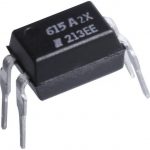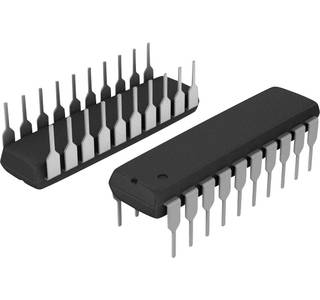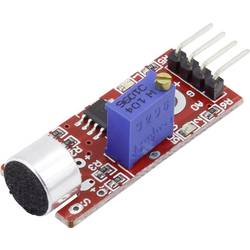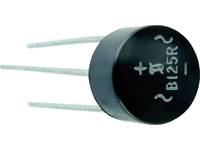Active components

Component Accessories

ESD Protection

Optoelectronics

Semiconductors

Sensors
Sales Active Components
Guides
About Active Components
Whether LED, rectifier, relay or Peltier element – active components are the backbone of electrical engineering. In our guide we give you a small overview of which active components are available and for which areas of application they are suitable.
Difference between active and passive components
Overview of active components
Our practical tip: Don't save on tools
FAQ – Frequently asked questions about active components
Difference between active and passive components

In electronics, the smallest component of a circuit is referred to as a component, which cannot be further dismantled without loss of function. This could be an LED, a capacitor or similar. A distinction is made between active and passive components: An active component allows the control or amplification of a signal. Passive components, on the other hand, behave passively according to the name and cannot amplify or control a signal. The range of passive electrical components includes resistors, capacitors, coils and reactors. In addition to a variety of active and passive components, our online shop also offers the right accessories.
Overview of active components

There are a number of active components in electronics, with sensors representing a large group. A sensor is a component that can convert a physical quantity or chemical effect into an electrical signal. These practical detectors have long conquered our everyday lives. They are present in the car, where they warn by means of ultrasound, if the distance to another vehicle or other obstacle is fallen below when parking out. Radar sensors are now also installed in many modern cars and an important component on the way to autonomous mobility. Your smartphone also has plenty of sensors: A proximity sensor, for example, switches off the display when you make a call when you hold the device to your ear. A temperature sensor monitors the temperature in your refrigerator, while a motion sensor automatically switches on the outdoor lighting when you come home in the evening. Sensors are also of great importance in the industrial sector. They measure temperatures, monitor levels and detect gas or chemicals in the air.

Semiconductor devices consist of a material that only conducts current under certain physical and electrical conditions. The most well-known components in this field represent microcontrollers and processors. They control heating and air conditioning systems and perform calculations in computers and calculators. Without microcontrollers and processors, in our technology world, neither TV, telephone, computer, car nor supermarket checkout would work. In electronics, however, there are other semiconductor components that provide valuable services for power supply, among other things: Modern semiconductor rectifiers, for example, provide a converter for the conversion of AC voltage to DC voltage, whereby the rectification is mostly realized by semiconductor diodes. Voltage regulators compensate for fluctuations in the input voltage and also stabilize the voltage. The transistors should not be left unmentioned either. A transistor, in simple terms, is an electrical switch that can switch and amplify signals. Without these small semiconductor components, electronic circuits in the field of microelectronics would not be possible at all.

The word optoelectronics, or optronik, is made up of the terms optics and semiconductor electronics. This means all electronic components that convert electrical energy into light (or vice versa). Optoelectronic components are divided into transmitters (actuators) and receivers (detectors). Today, optronik is an integral part of industry and the private sector and encompasses a wide range of active components, from LED control to laser technology and fiber optic cable. Display and display technology in particular plays an important role in our advanced knowledge and information society. Hardly any device can be equipped today without an LCD, dot matrix display or at least a 7-segment display. In consumer electronics, the trend has for some time been increasingly toward particularly high-contrast and color-intensive OLED displays. But laser and infrared technology is also not without active components.
Our practical tip: Don't save on tools
Especially when working in the electronics area, you should pay attention to the use of suitable tools. For example, a suction pipette can save you time and nerves when equipping PCBs with SMD components.
FAQ – frequently asked questions for active components

What was special about OLED technology?
The abbreviation OLED stands for Organic Light Emitting Diode. The biggest difference between an OLED and a conventional LED display is the lack of a backlight. An OLED screen lights up automatically when a voltage is applied. This means that the corresponding displays are particularly energy-saving and are therefore often used in high-quality mobile phones. Further advantages are low response times as well as good viewing angle stability. In addition, OLED displays have an extremely high contrast and can be made so thin that even curved surfaces are easily possible.
What are the advantages and disadvantages of fiber cabling compared to copper-based cabling?

Fiber is not without reason considered the transmission medium of the future. The significantly higher performance speaks for fiber-optic cables (fiber-optic cables), specifically: A considerably higher bandwidth and range than a copper cable. The fiber optic cable also has lower attenuation values and resistance to electromagnetic interference. However, there are also some disadvantages: The higher costs are the first to be compared to copper. Fiber-optic cables are also much more sensitive to mechanical loads and can only withstand smaller bending radii. In addition, the correct installation of fiber optic cables requires much more care and accuracy from the installer.
What was SMD?
SMD is the abbreviation for Surface Mounted Devices. In the case of ordinary electronic components, the contacts are guided through the mounting holes of the circuit board and then soldered. SMD components are, however, so small that they are glued to the board and then soldered, so there are no mounting holes. The advantage of a circuit made in SMD technology is the significantly increased component density. In addition, there is a cost saving as the boards are smaller and the mounting holes do not have to be installed. And ultimately, devices can be generally built smaller by using SMD. Imagine a smartphone whose board would not have been equipped with SMD components; it would probably have the size of a brick.
